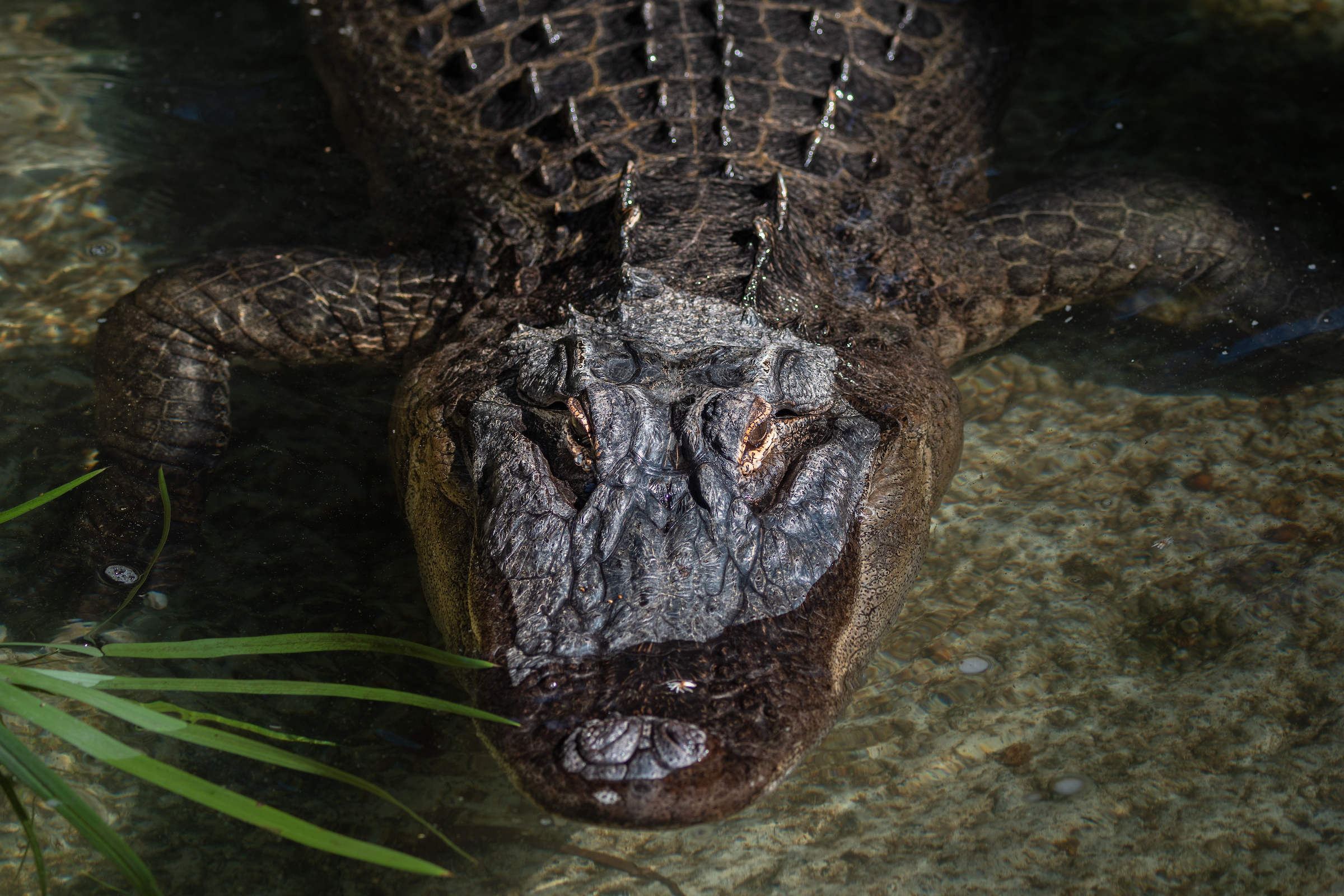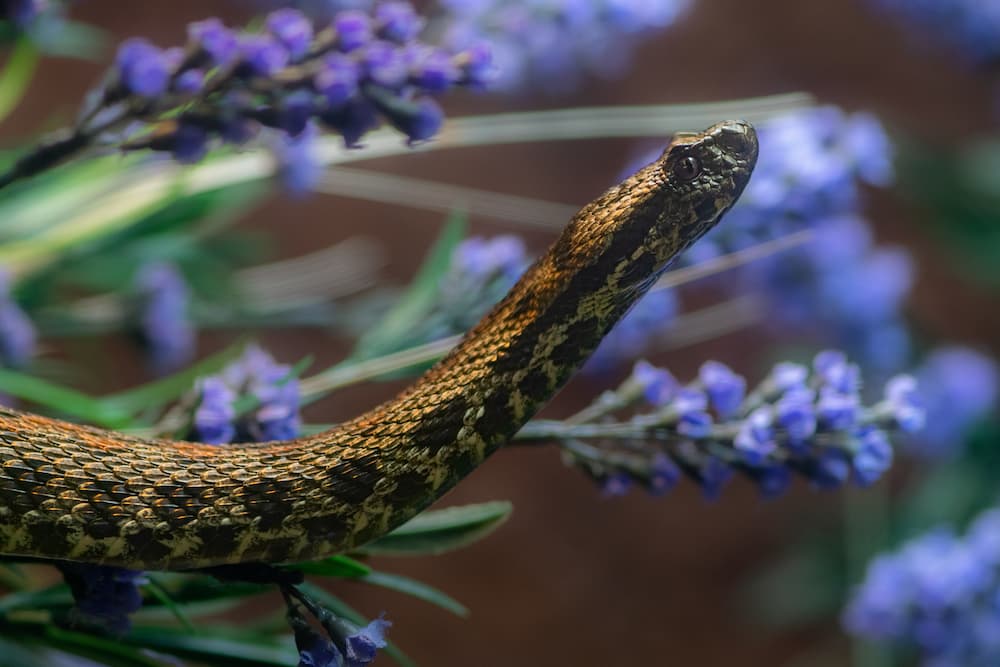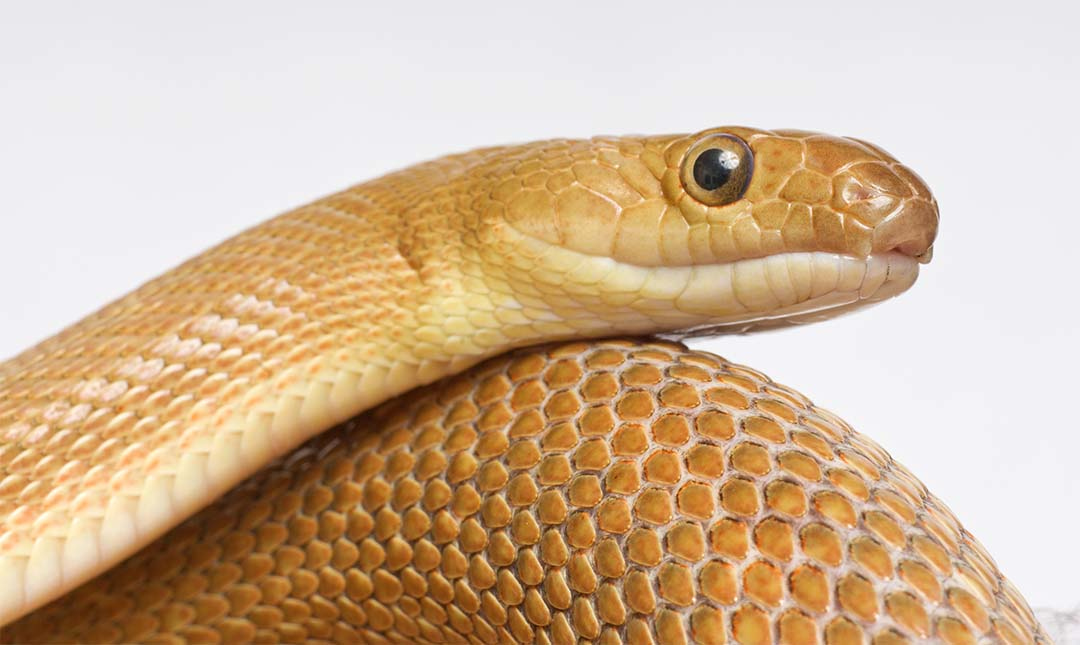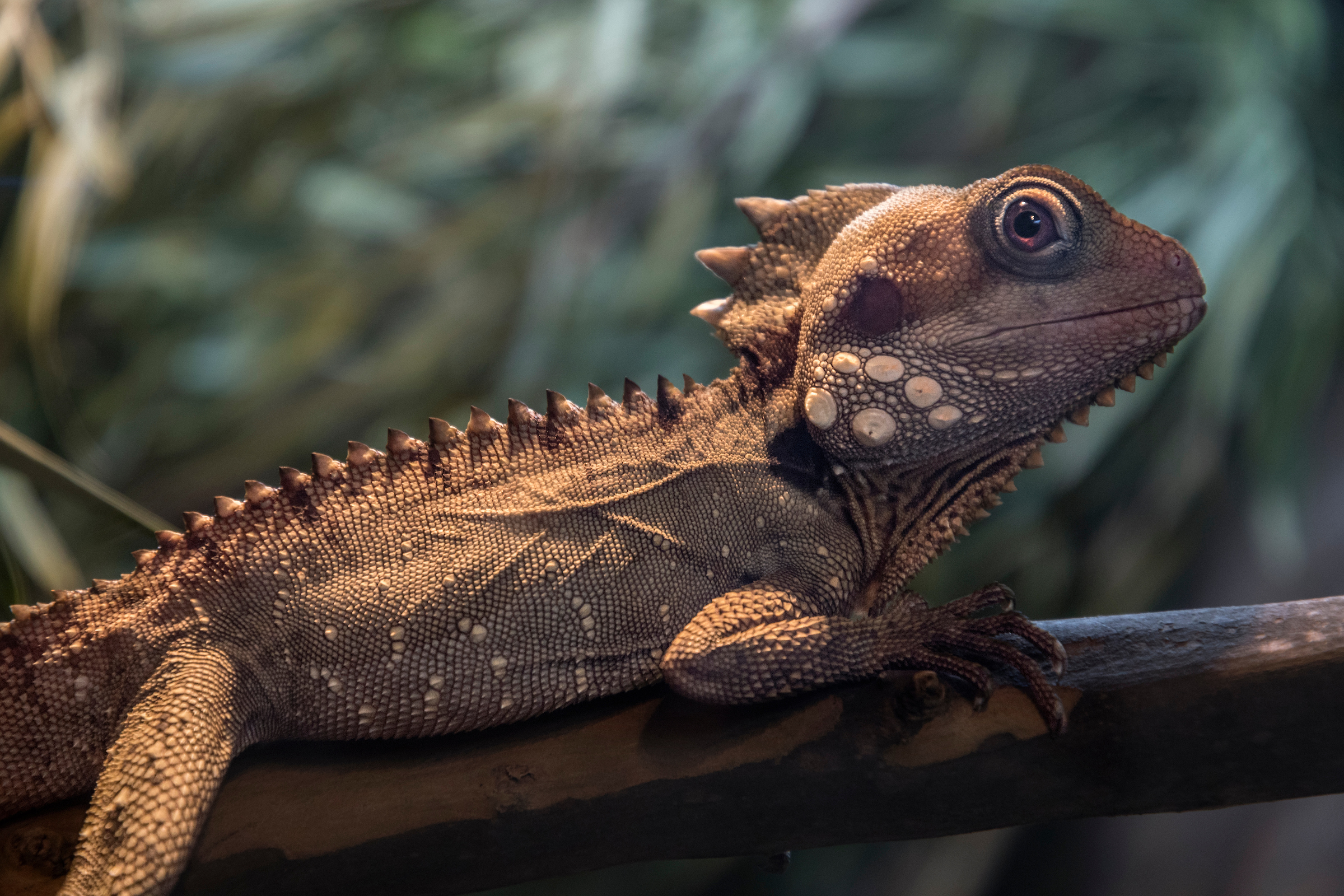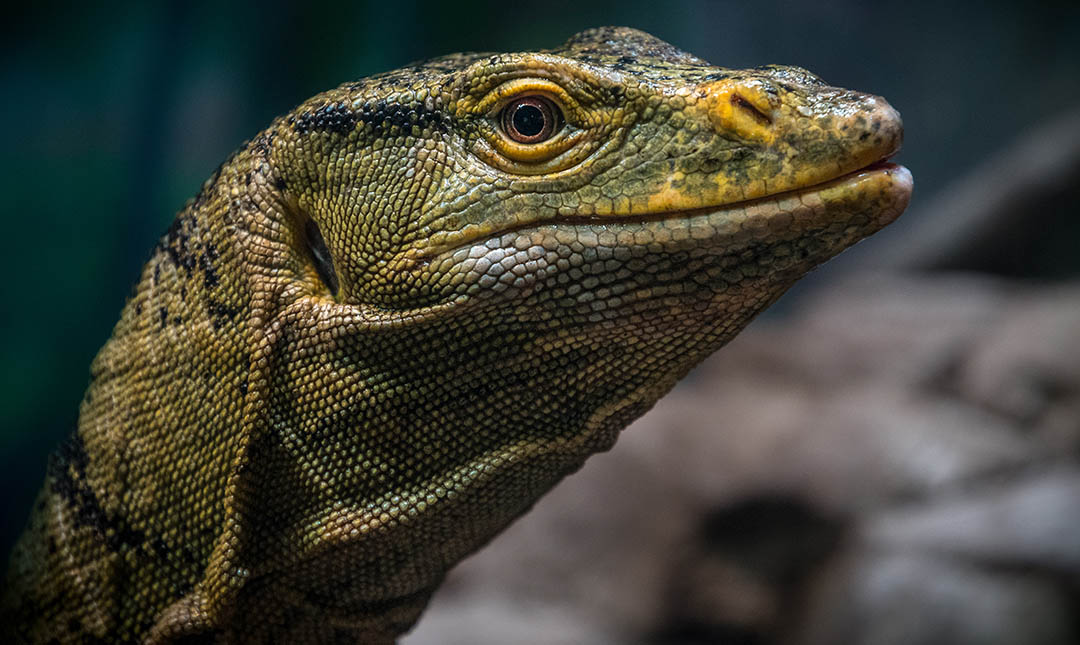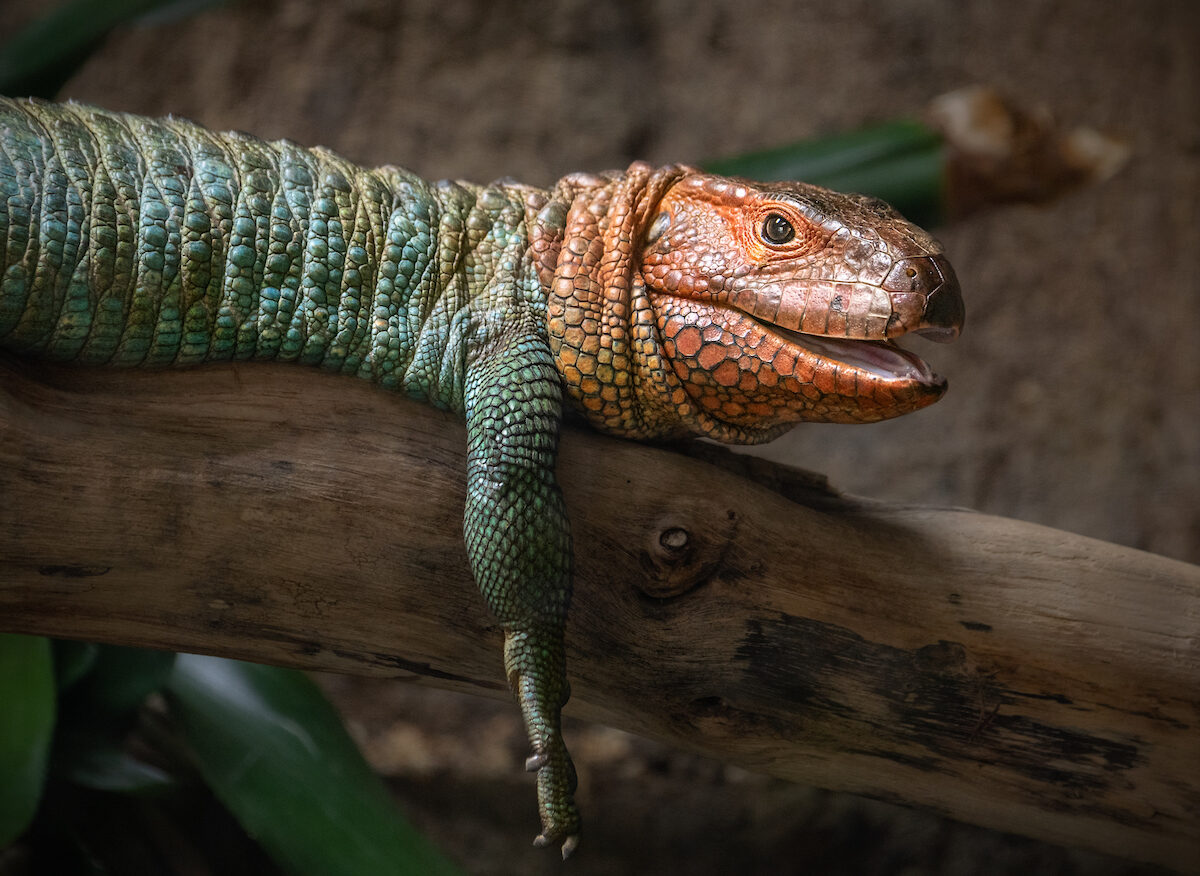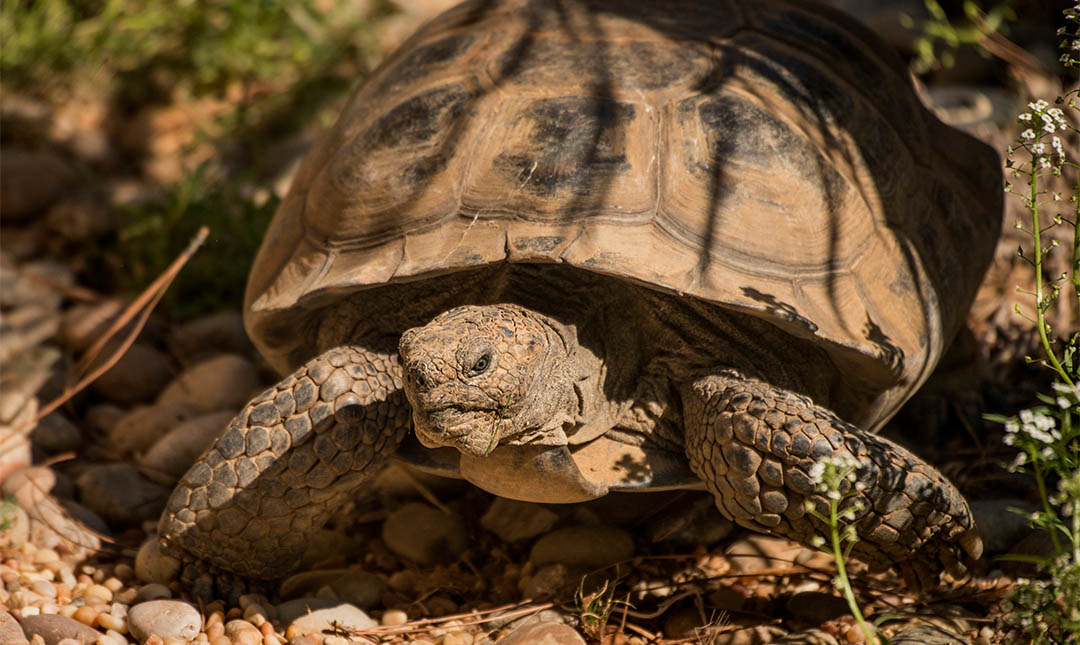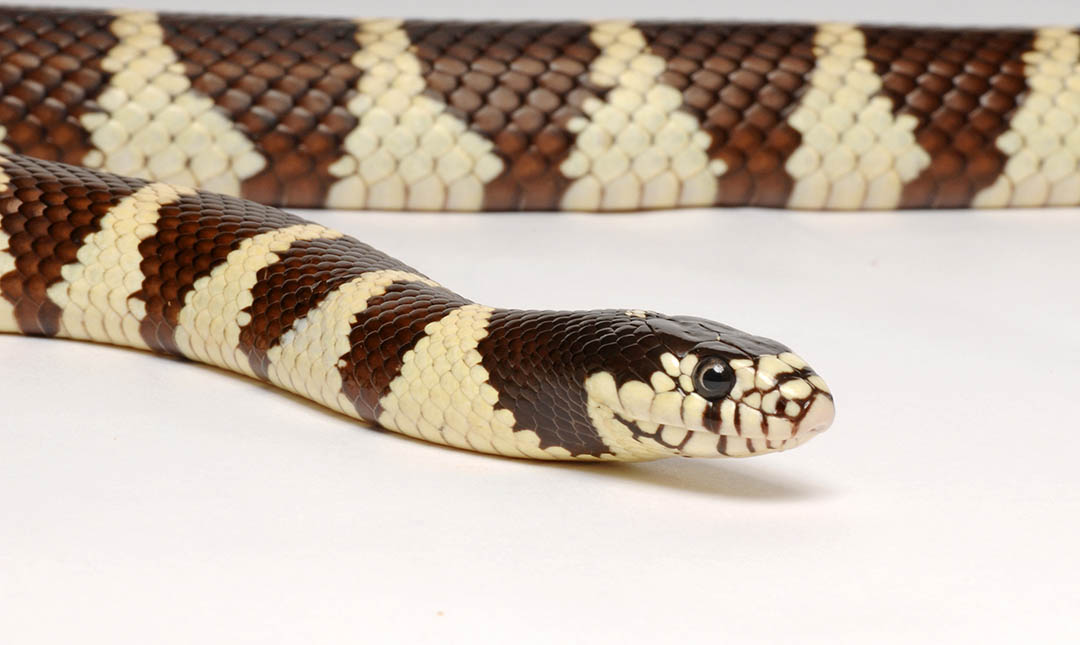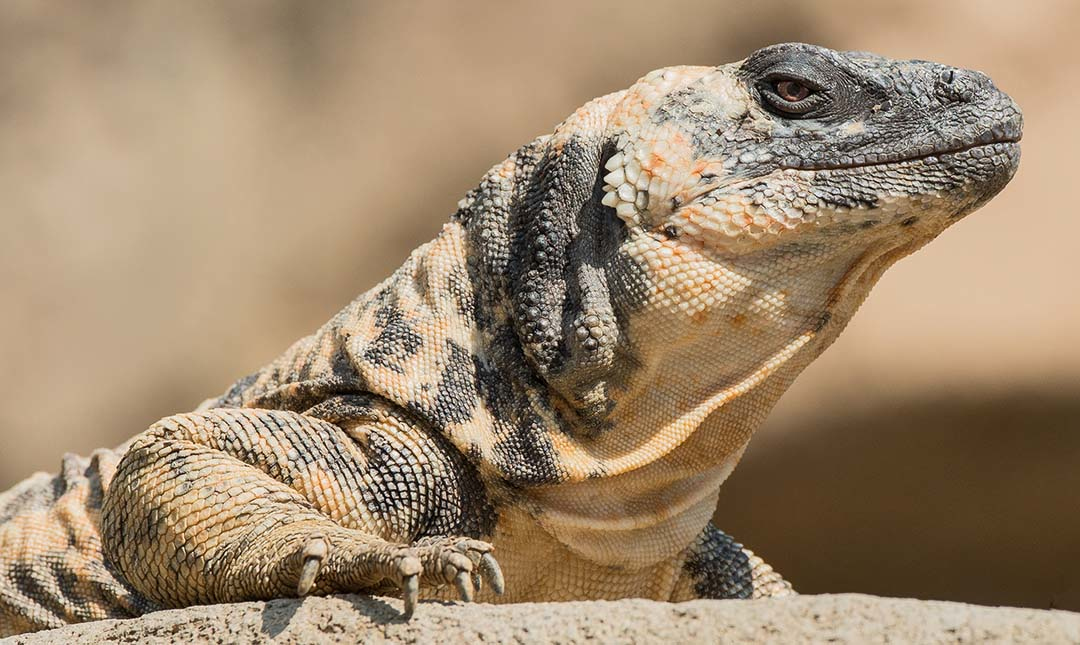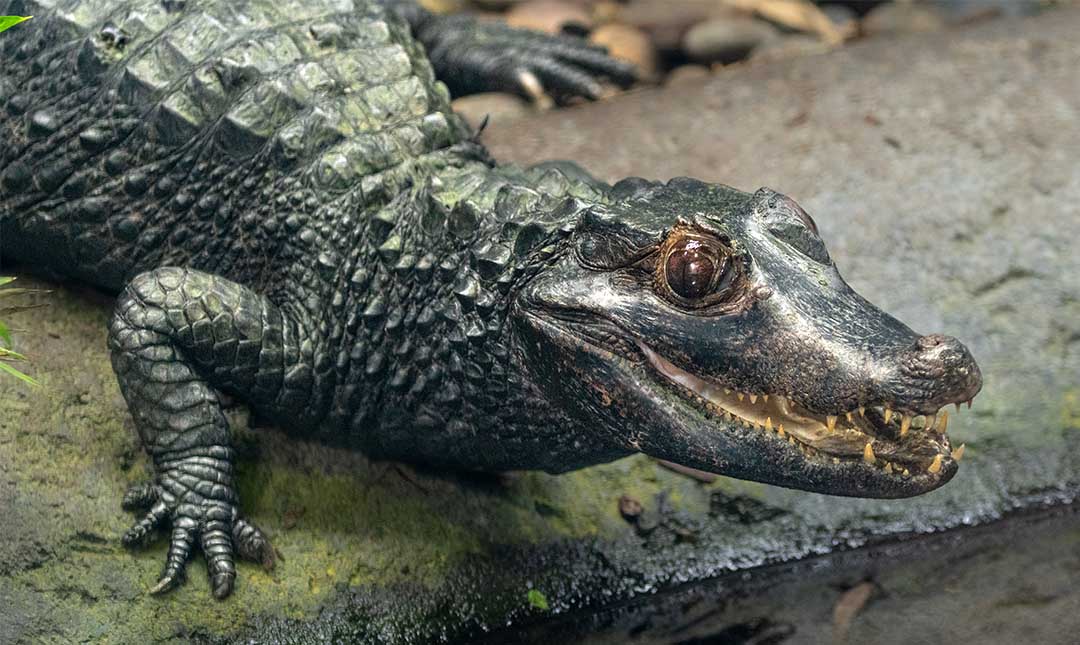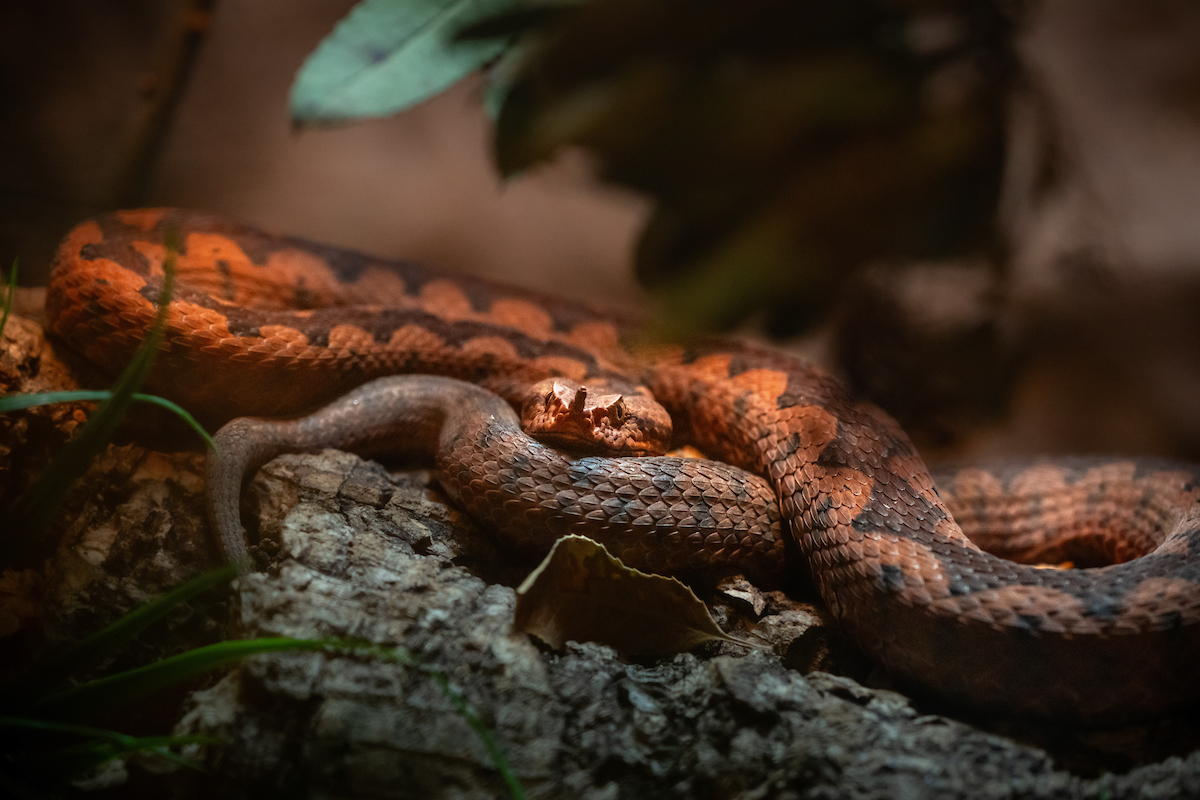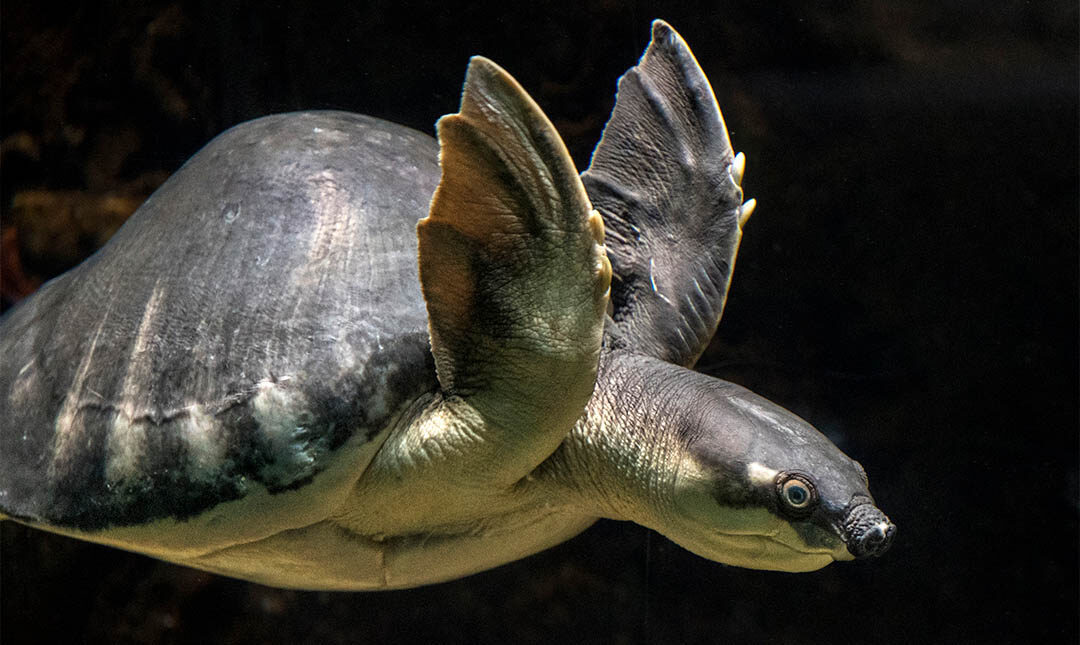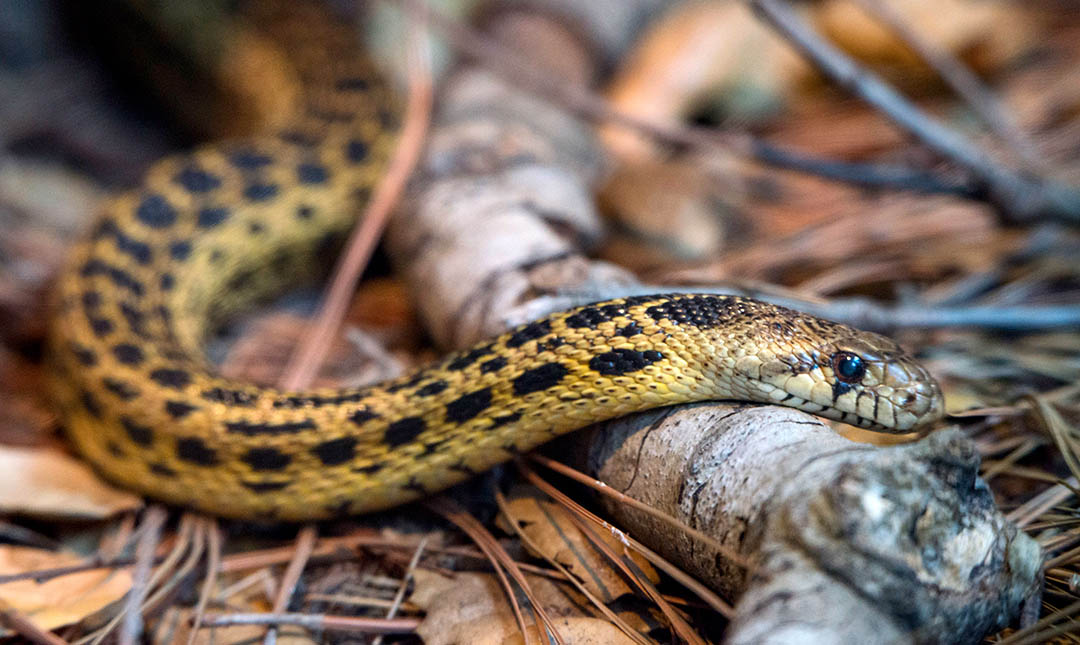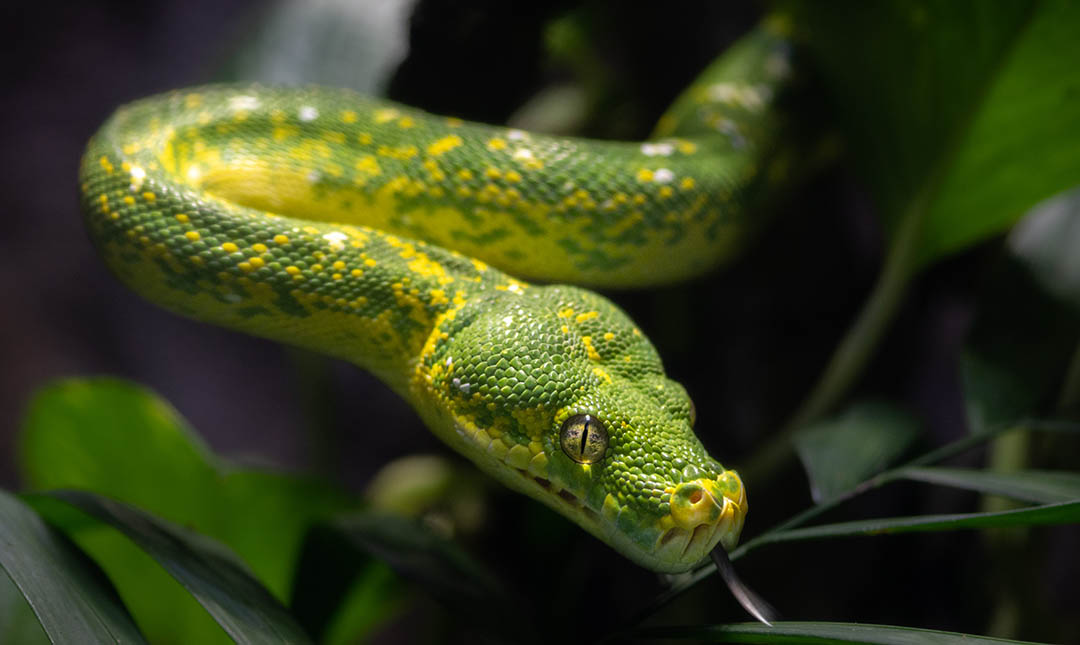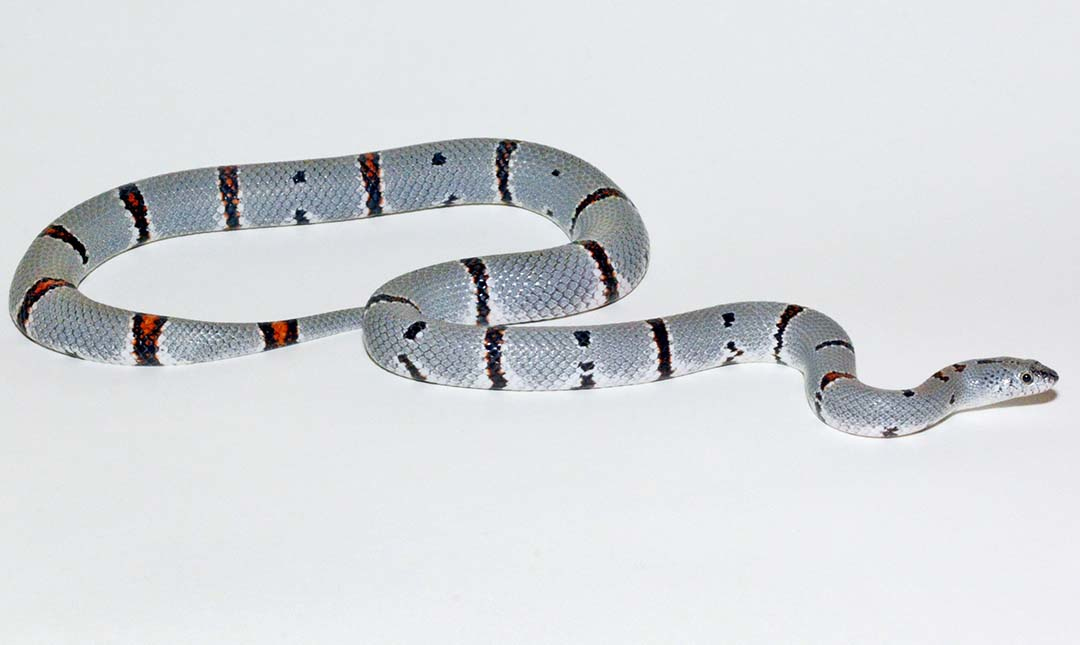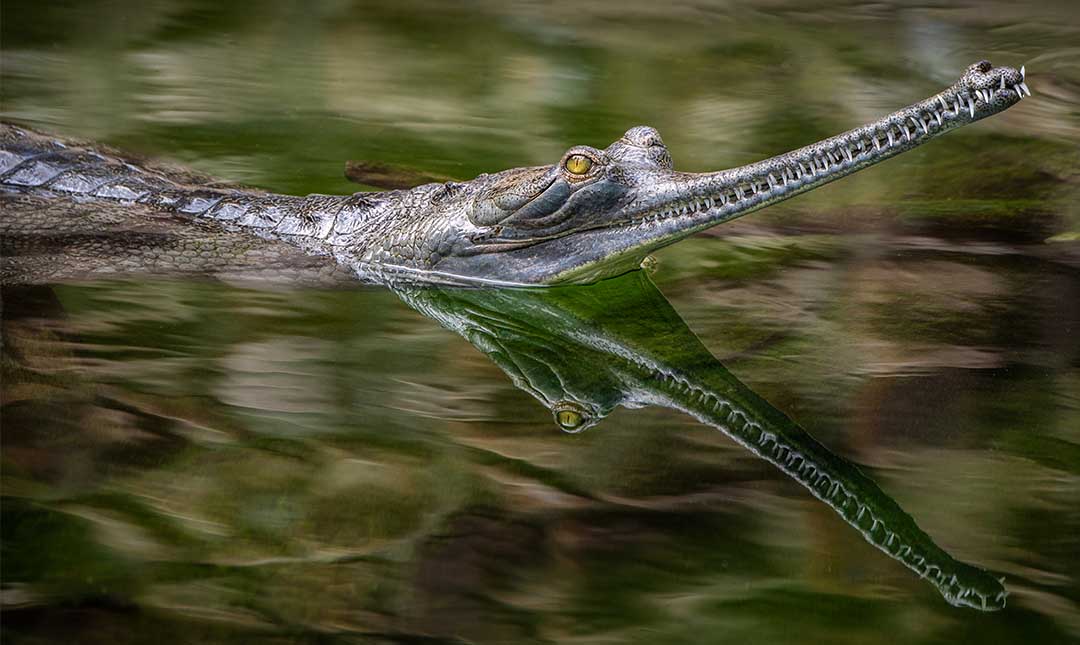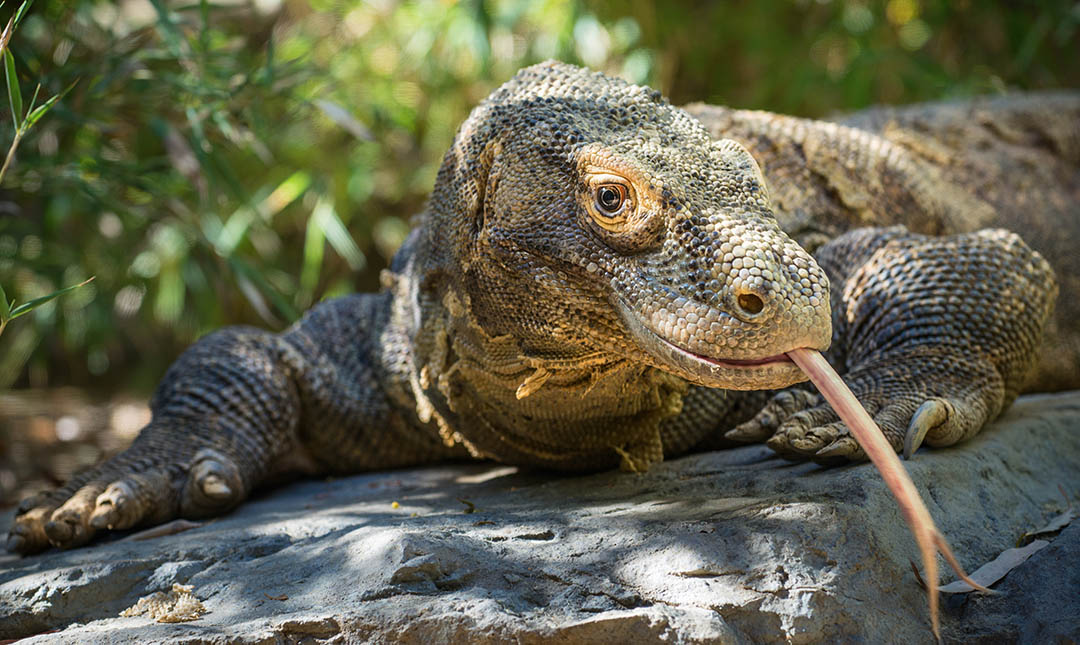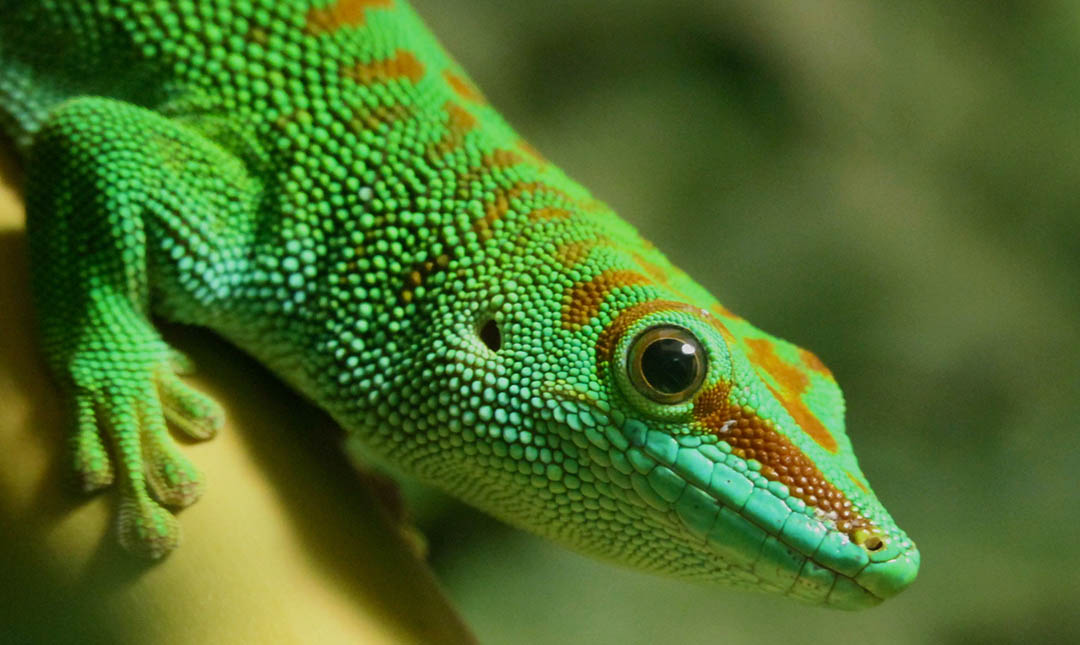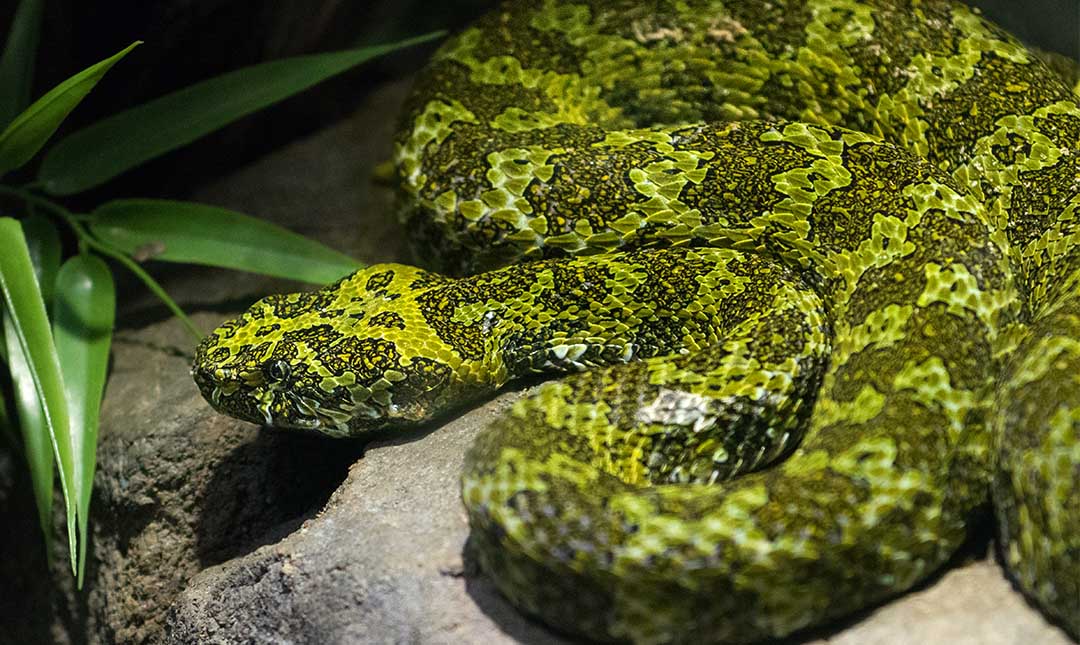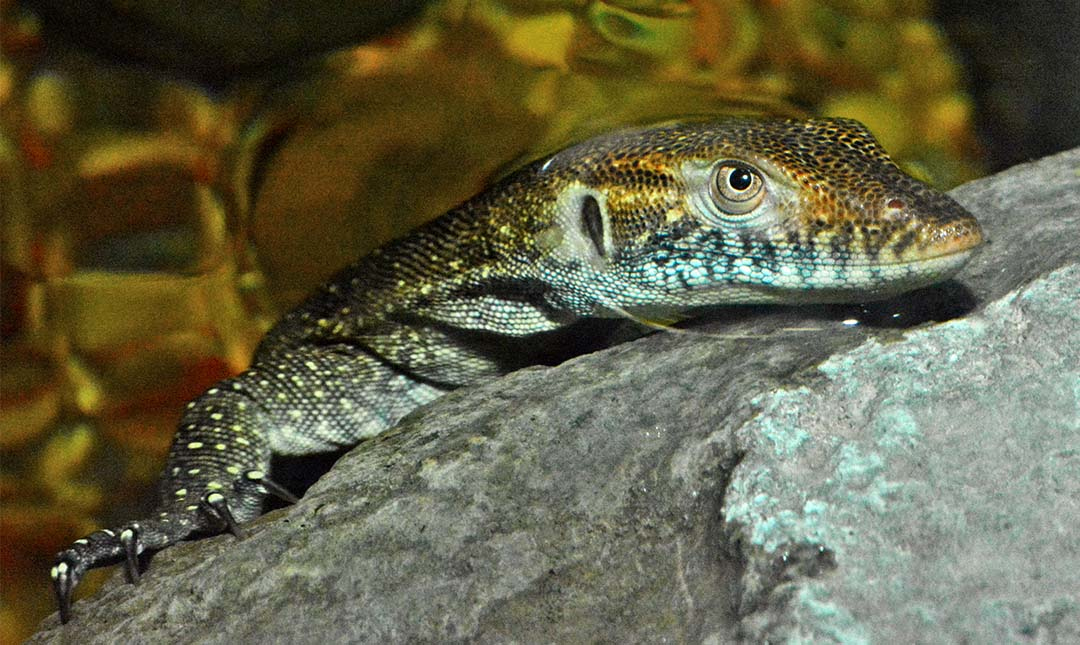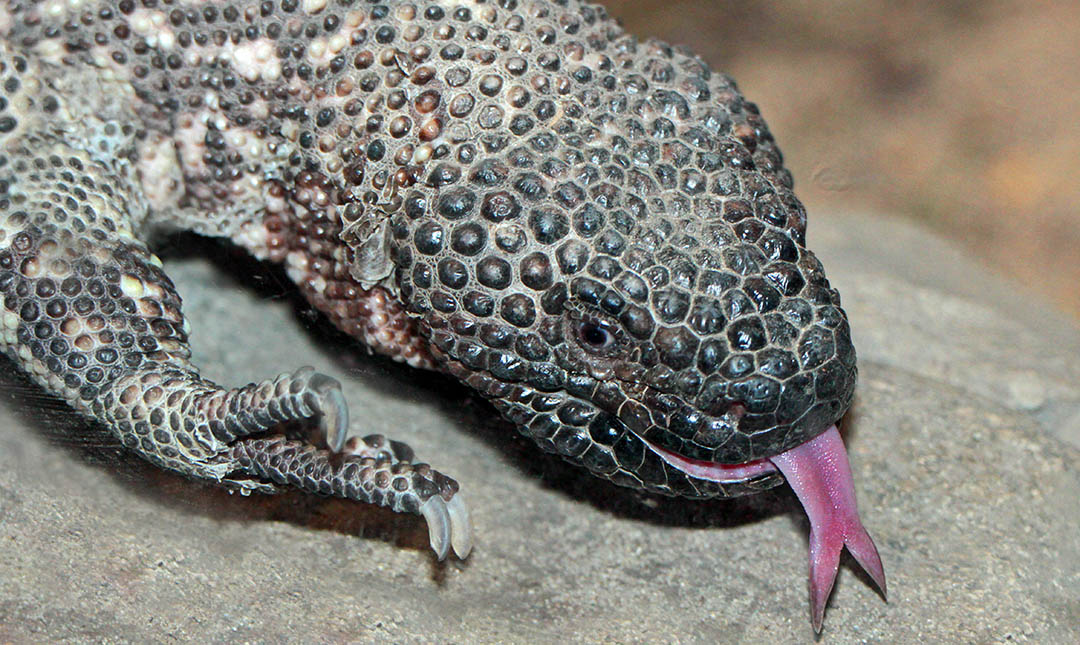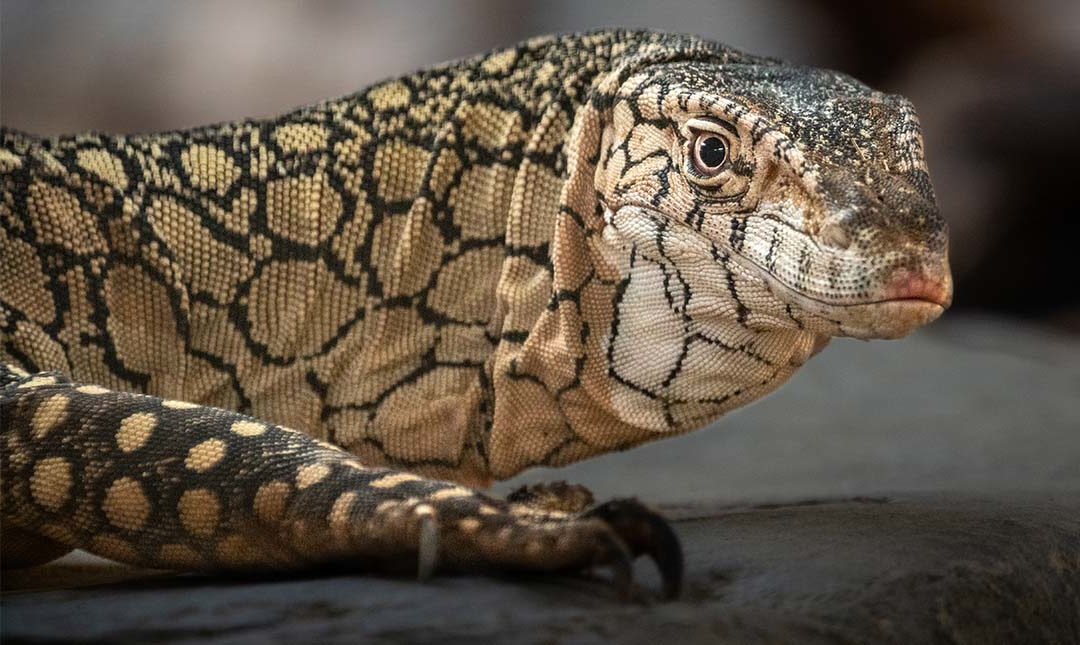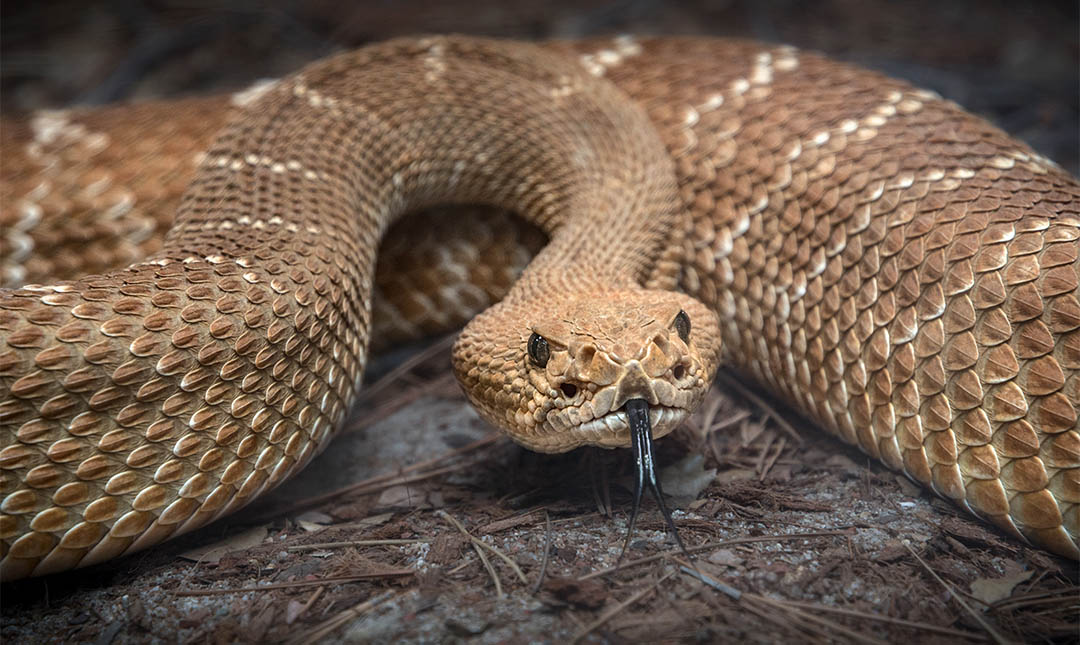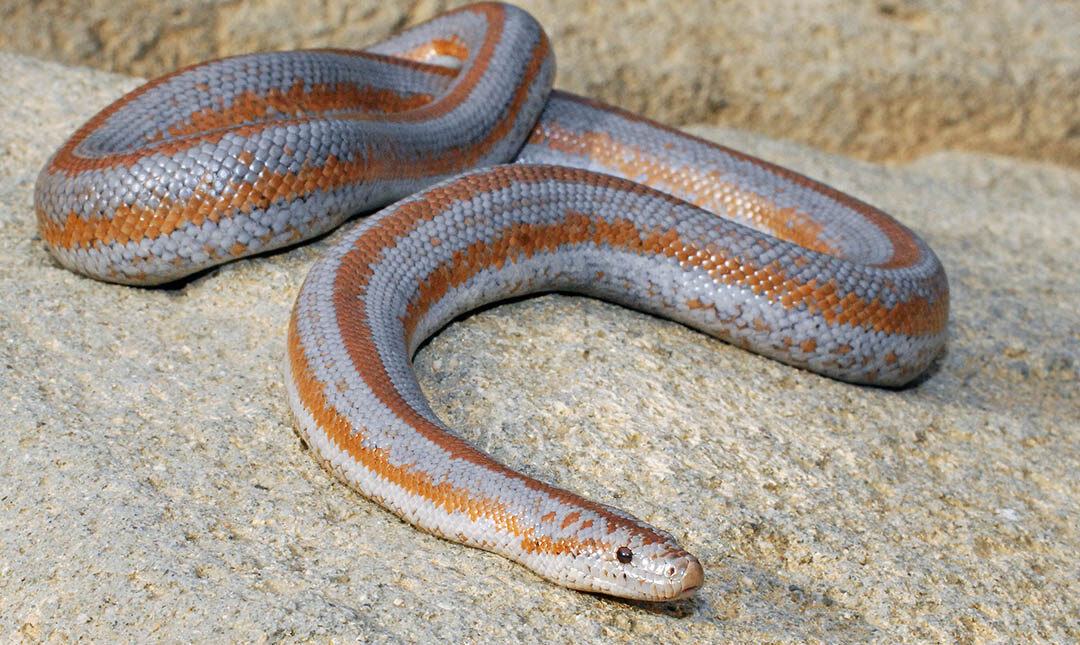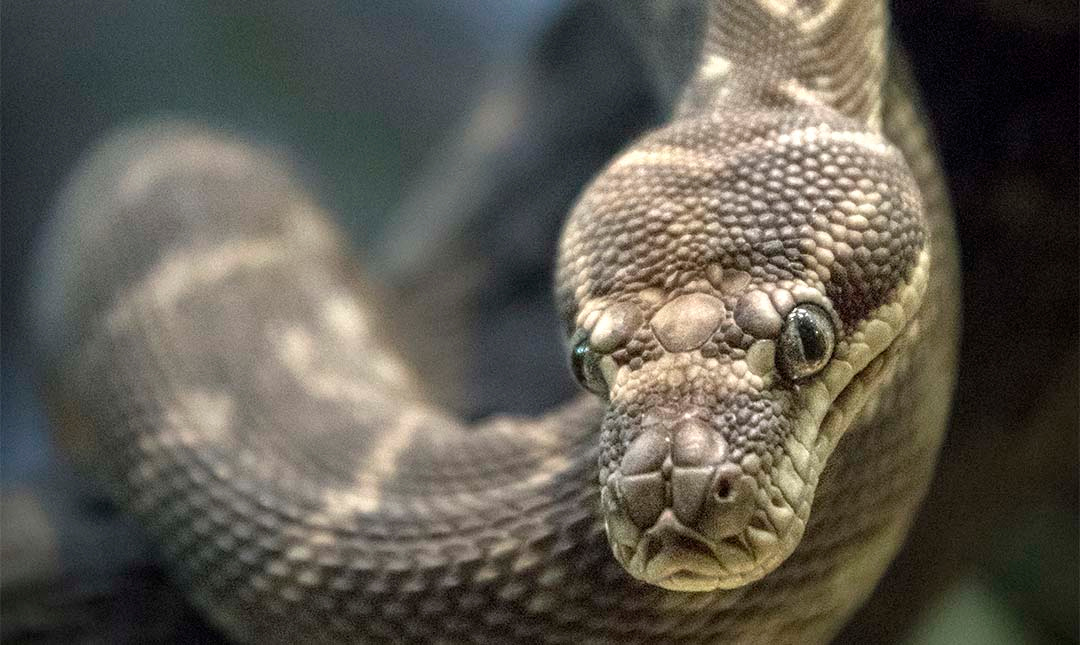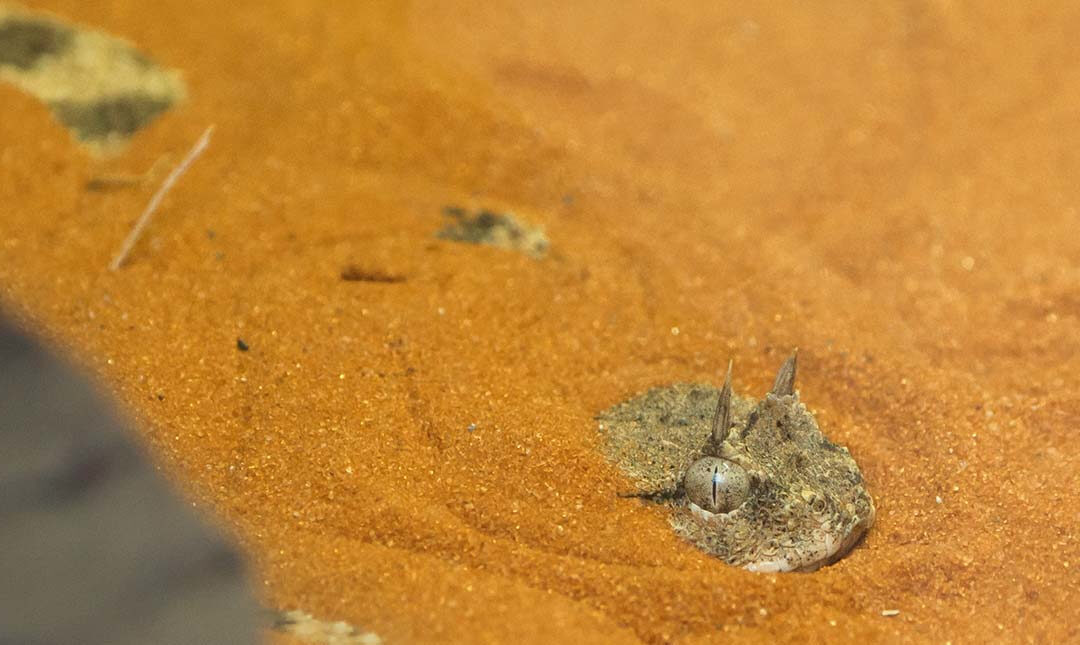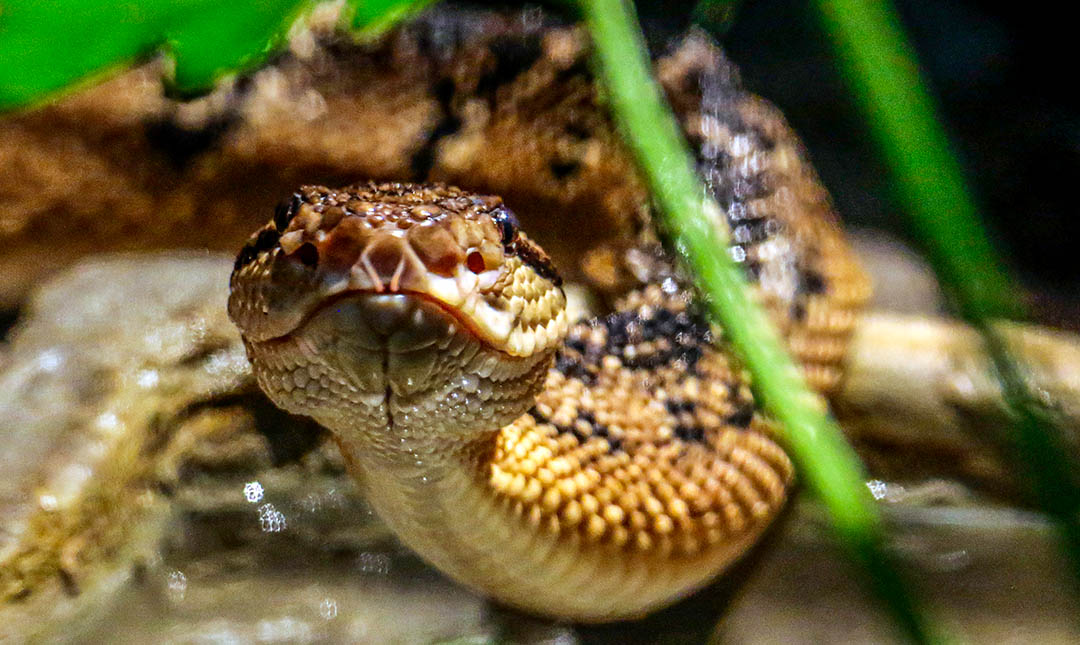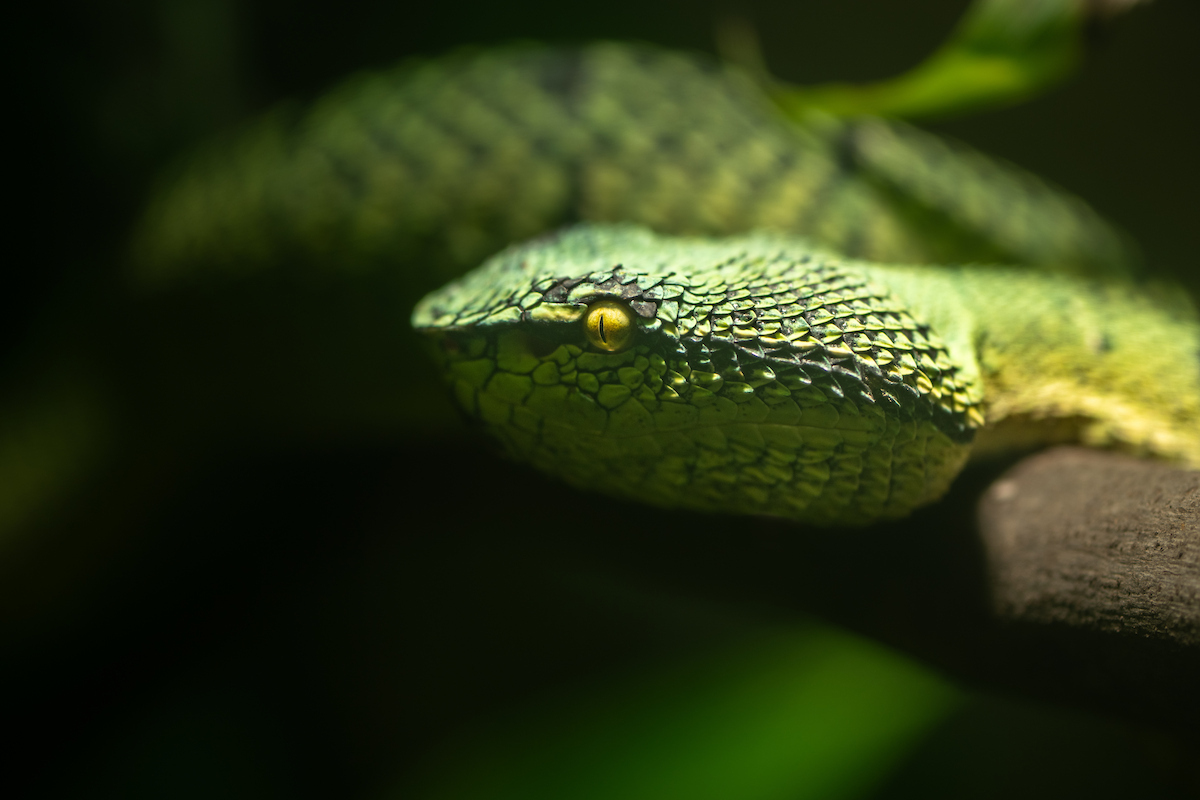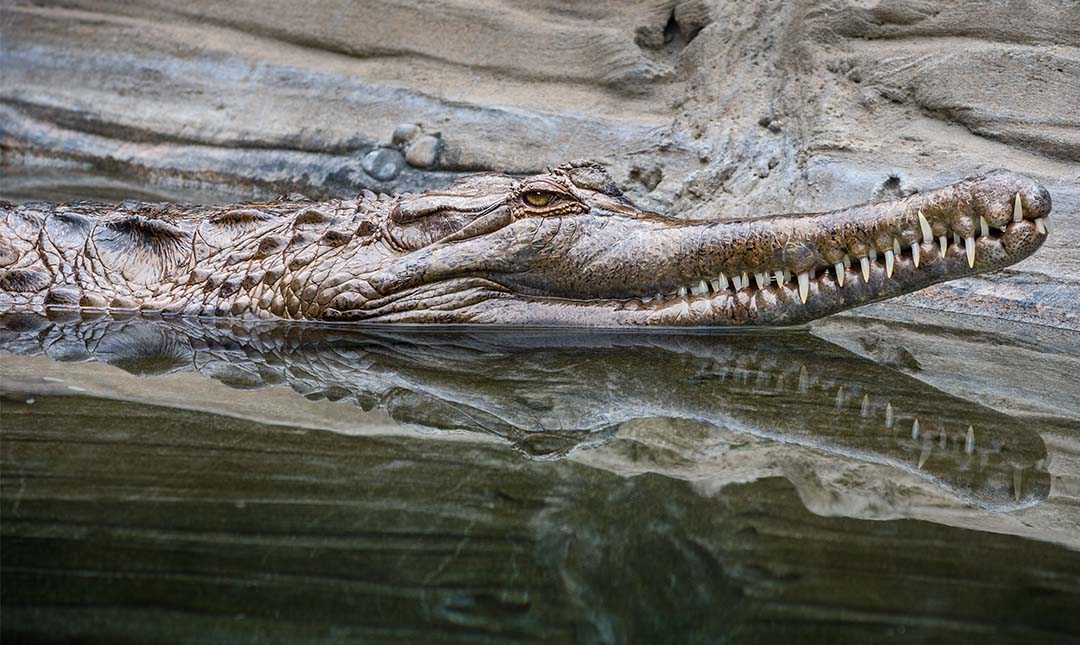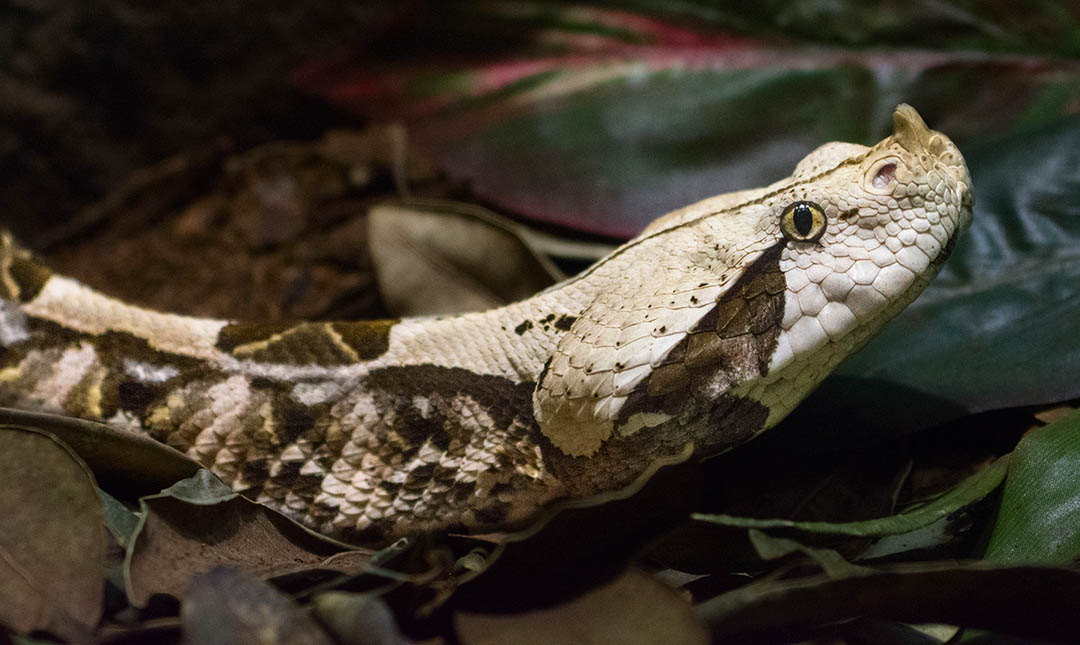Reptiles
Reptiles are cold-blooded, usually egg-laying vertebrates (animals with backbones). Their skin is covered with scales or plates. Unlike mammal young, which are dependent upon their mothers for some time after birth, most reptiles are independent from day one.
There are more than 10,000 known reptile species. Below is the list of reptiles on regular view at the Zoo.
Aldabra Tortoise
This tortoise is one of the world’s longest living animals with a lifespan of 150+ years.
American Alligator
Early in the day, American alligators often bask on the shoreline to raise their body temperature.
Armenian Viper
This venomous snake inhabits rocky areas habitats in the Middle East.
Baja Ratsnake
The secretive, nocturnal ratsnake is nonvenomous and lives in dry, rocky habitats.
Boyd’s Forest Dragon
This Australian tree-dwelling lizard is a master at camouflage.
Butaan (Gray’s Monitor)
Until its rediscovery in the 1980s, this monitor lizard species was believed to be extinct.
Caiman Lizard
A red-orange head helps this South American lizard stand out.
California Desert Tortoise
California’s official state reptile is native to the Mojave and Sonoran deserts.
California Kingsnake
Why are these snakes kings? These non-venomous snakes eat their competition for lunch.
Cape Cobra
The highly venomous Cape cobra is famous for its threat display.
Chuckwalla
These desert dwellers can inflate their bodies by swallowing air.
Dwarf Caiman
This ambush hunter is the smallest member of the alligator family.
European Long-nosed Viper
This viper’s most distinctive trait is a single “horn” on its nose.
Fiji Island Banded Iguana
The Fiji Island iguana is an arboreal lizard distinguished by its vivid emerald coloring.
Fly River Turtle
Fly River turtles use their disk-shaped snouts for snorkeling.
Gila Monster
This lizard’s genus name (Heloderma) comes from Greek, meaning “studded skin.”
Gopher Snake
This nonvenomous snake’s diet includes moles, rats, mice, and, of course, gophers.
Green Mamba
Mambas are primarily solitary creatures and seldom come into contact with humans.
Green Tree Python
This snake has many adaptations that make it a successful tree dweller.
Grey-banded Kingsnake
This nonvenomous snake has a gray body with narrow orange-red bands.
Indian Gharial
The gharial is one of the most aquatic crocodilian species.
Komodo Dragon
The world’s largest lizard has a reputation for having a deadly bite.
Madagascar Giant Day Gecko
These living jewels are bright emerald-green with scattered red lines and spots.
Madagascar Radiated Tortoise
The spectacularly patterned radiated tortoise is critically endangered.
Mangshan Pit Viper
This stunning emerald green snake is nearly extinct in the wild.
Merten’s Water Monitor
This large lizard dives from branches or rocks to hunt for crabs and fish.
Mexican Beaded Lizard
This lizard shares many characteristics with its close relative, the more famous Gila monster.
Painted Terrapin
Painted terrapins are medium to large-sized turtles native to Asia.
Perentie
Australia’s largest lizard, the perentie is related to the Komodo dragon.
Rattlesnakes
A rattlesnake’s rattle is a warning to predators to leave these snakes alone.
Rosy Boa
The rosy boa is a type of constrictor native to SoCal deserts and beyond.
Rough-Scaled Python
This snake’s name comes from its keeled scales, which gives its body a rough texture.
Saharan Horned Viper
This viper has “horns” (modified scales) over each eye.
South American Bushmaster
The bushmaster has one of the deadliest snake bites in the world.
Temple Viper
This viper has a prehensile tail, which makes it perfectly suited for a life in the trees.
Tomistoma (False Gharial)
This Asian crocodilian has a long narrow snout with up to 84 interlocking teeth.
Western Gaboon Viper
The Gaboon viper has the longest fangs of any venomous snake.



